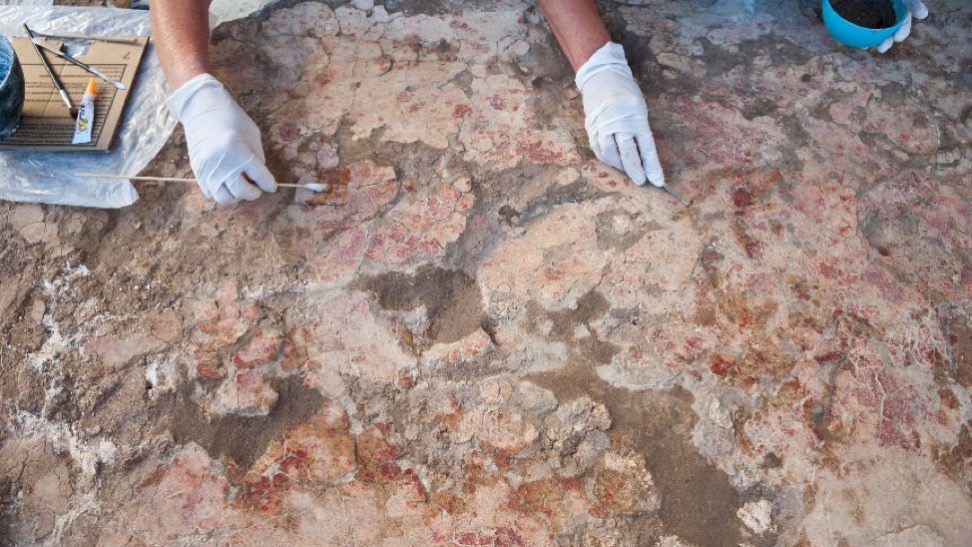
Religious and funerary beliefs and practices during the Saita and Saito-Persian period in the city of Oxyrhynchus (El-Bahnasa), Egypt
Throughout almost three consecutive decades of archaeological work in the High Necropolis of Oxirrinco, there are many and varied findings, the study of which has given us valuable information about the evolution of religious-funeral beliefs at the site. Continuous occupation of the city since the Saita period, 7th century BC, until the arrival of the Arabs in the 8th century AD, and for the great amount of archaeological vestiges that have been preserved and that confirm us the systematic evolution of a society. The results obtained have been, and still are, a better understanding of how this city was in ancient times, especially from the religious and funerary point of view.

Period
From the Saita period (664 B.C.) to the Christian-Byzantine period (7th century A.D.), when the Muslim invasion of Egypt took place, passing, of course, through the Ptolemaic-Roman stage.
Institution
Universitat de Barcelona-IPOA (Institute of the Ancient Near East).
Web and social networks
http://www.ub.edu/museuvirtual/visita-virtual-oxirrinc/index.php
https://twitter.com/IPOAUB
https://www.facebook.com/groups/oxirrinco
Principal Investigator(s)
Dr. Ignasi-Xavier Adiego Lajara
Dra. Maite Mascort Roca
Dra. Esther Pons Mellado
Dr. Josep Padró Parcerisa
Location
The Oxirrinco site (El-Bahnasa, Egypt), is located 190 km south of Cairo
LOCATION
RESULTS
Throughout almost three consecutive decades of archaeological work in the Upper Oxirrinco Necropolis, it has provided valuable information about the evolution of religious-funeral beliefs at the site.
- A unique finding, not only in Oxirrinco, but also in Egypt, which took place between the 2012-2013 campaigns. It is an offering of 50,000 Oxyrinco fish, a fish symbol of the city, and the way the goddess of the place, Toeris, is represented.
- A great number of funerary constructions from the Saita and Saito-Persian periods, a total of 14, that present some common aspects, but also some different ones that evidence changes along this lake period of time (664- 330 B.C.).
- All the tombs are built with large blocks of white limestone joined with lime mortar, but in the case of the tombs of the Saite period said mortar presents a pink color, while in the case of the tombs of the Persian stage, said mortar tends to have a more grayish tone.
- The individuals found in the various chambers are always mummified and wrapped in bandages. In the case of the tombs of the Saíta period, always inside white limestone sarcophagi, many epigraphic cases provide us with important information about the person buried there: name, filiation, positions he held during his life, etc, and in the same way they are usually accompanied by a not inconsiderable funeral trousseau such as canopic, epigraphic or anepigraphic vases and in general of a great quality, ushebtis, also epigraphic or anepigraphic, bronze sculptures, the great majority of the god Osiris, ceramic vessels, scarabs, amulets of very diverse material: lapis lazuli, cornelian, fayenza, hematite, gold, etc., and of very diverse subject matter.
The architectural study of these tombs and of everything recovered inside them, allows us to assure that they are generally family tombs, and that they belonged to the political-religious elite of the ancient city of Per-Medyed.
PICTURES
- New study suggests King Tut’s tomb artifacts are linked to mysterious Osiris ritual (Archaeology News 29/03/2025) - 10 April, 2025
- Many Medieval Manuscripts Found to Be Bound in Seal Skins from the Arctic (La Brújula Verde 09/04/2025) - 10 April, 2025
- Bronze Age cymbals unearthed in Oman reveal how music united prehistoric Persian Gulf cultures (Archaeology News 08/04/2025) - 9 April, 2025

























